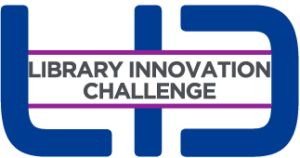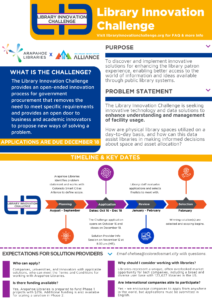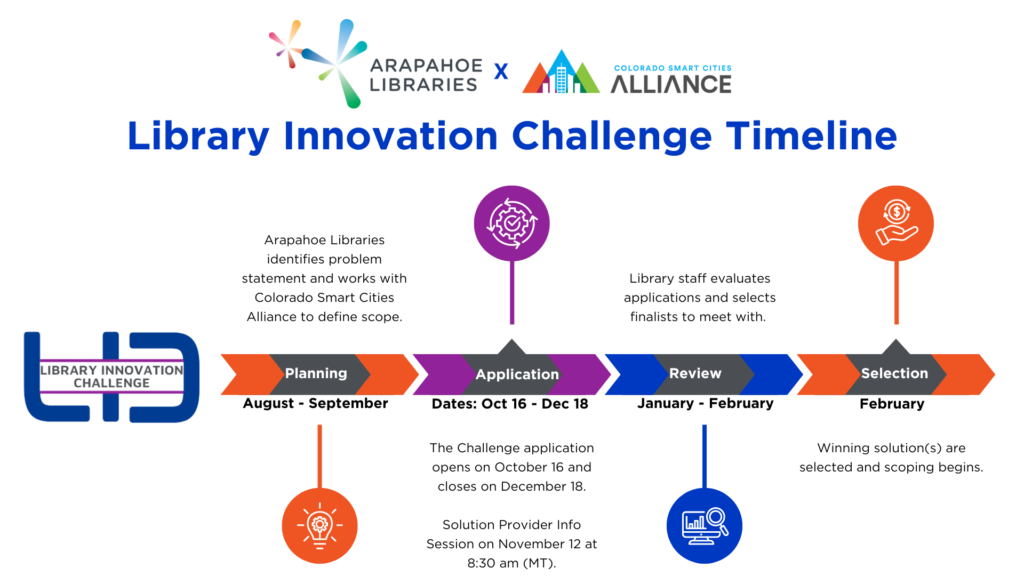Library Innovation Challenge
Congratulations to the inaugural Library Innovation Challenge Winners!
The Challenge winners, H.H. Angus & Associates Ltd. and Nureal.ai, will work with Arapahoe Libraries to scope and deploy cutting-edge technologies at select locations with an opportunity to scale.
H.H. Angus & Associates Ltd. will deploy at the Smoky Hill Library with a solution that aggregates data from multiple sources, including newly installed Xovis sensors for zone counting, to provide a holistic view of the environment.
Nureal.ai will deploy at Eloise May Library, leveraging an Artificial Intelligence (AI) algorithm to identify and analyze patron movement throughout the site while providing real-time data visualization and predictive analytics.
What is the Library Innovation Challenge with Arapahoe Libraries?
The Library Innovation Challenge provides an open-ended innovation process for government procurement that removes the need to meet specific requirements and provides an open door to business and academic innovators to propose new ways of solving a problem. The objectives are as follows:
- Identify better solutions to issues impacting Arapahoe Libraries and, more broadly, other libraries and government organizations.
- Attract innovative ideas, people, and investment to Colorado
- Build a collaborative ecosystem across and within governments and other sectors that benefits Colorado
- Provide a streamlined procurement process that creates efficiencies for all participating stakeholders
- Motivate, inspire and, ultimately, change government to become more innovative and collaborative
Purpose
To discover and implement innovative solutions for enhancing the library patron experience, enabling better access to the world of information and ideas available through public library systems.
Challenge Statement and Solution Context
The Library Innovation Challenge is seeking innovative technology and data solutions to enhance understanding and management of facility usage. How are physical library spaces utilized on a day-to-day basis, and how can this data assist libraries in making informed decisions about space and asset allocation?






